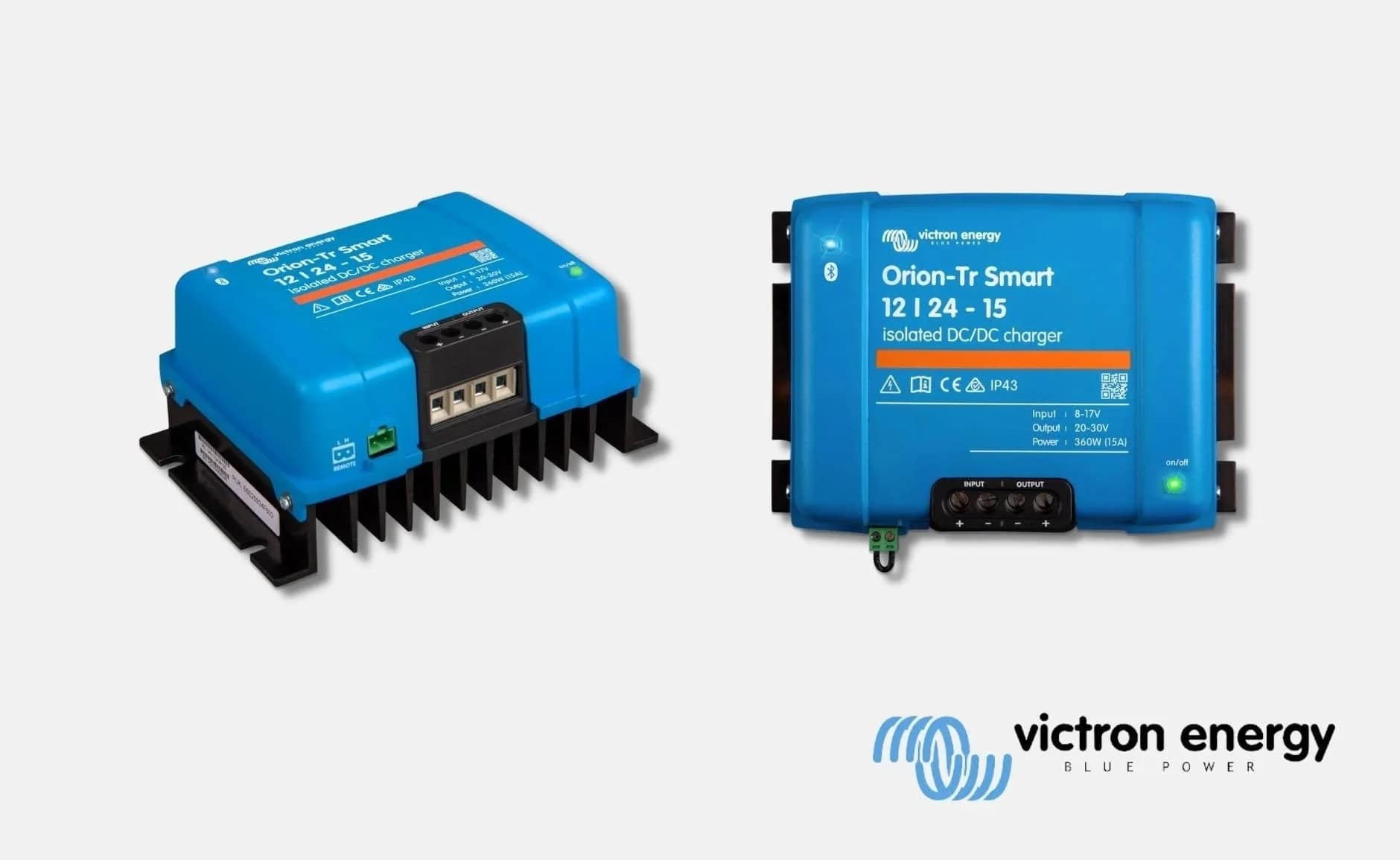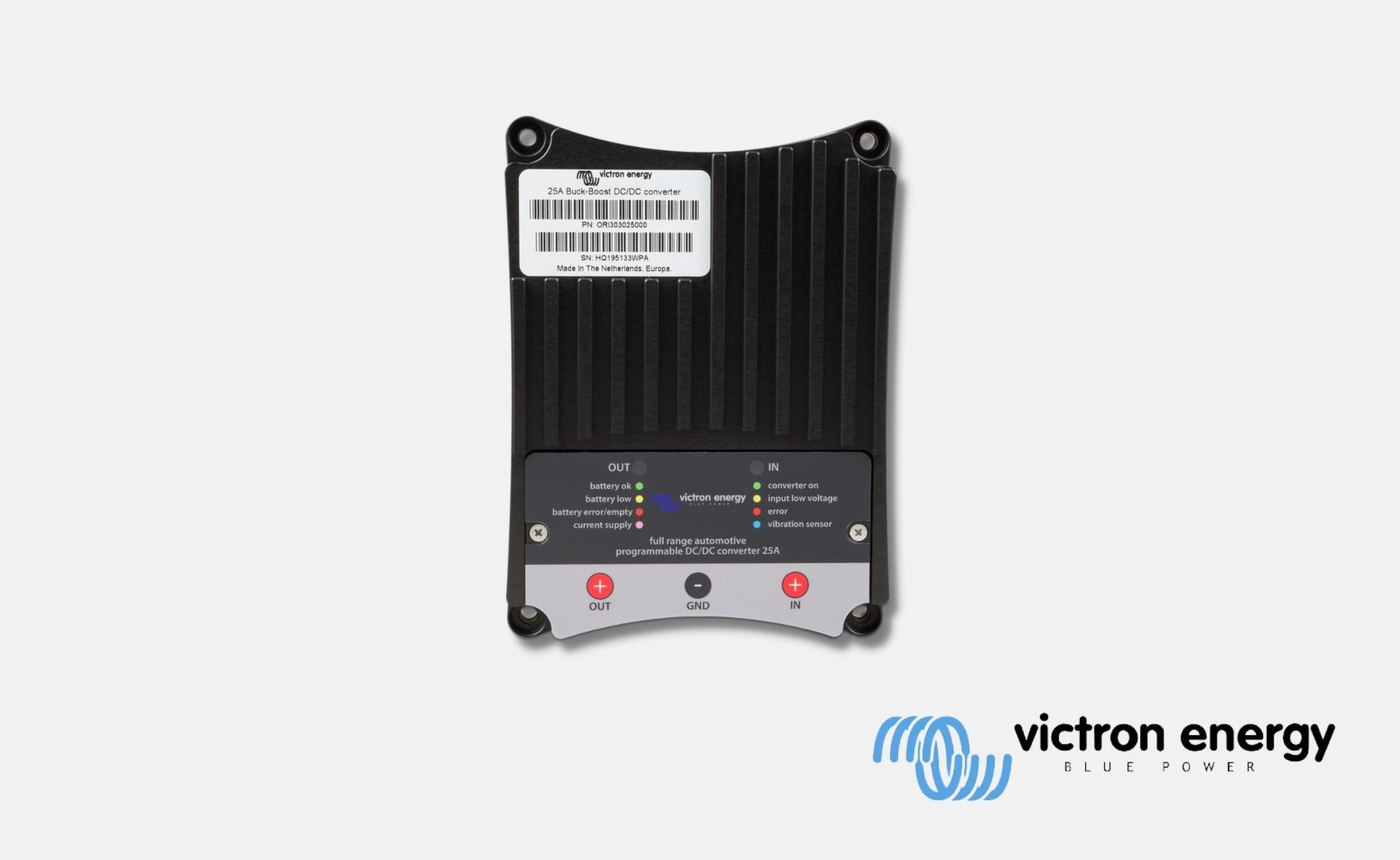The DC/DC charger is another babysitter that ensures your battery is looked after.
It manages the power from ‘other’ DC sources (i.e. not solar panels) and regulates it on it’s way to the battery.
This could be a feed from a dedicated DC generator or power being supplied by a vehicle alternator.
Factors to consider when choosing your DC/DC Charger.
1) Battery charging is more complex than it seems....
It may sound straightforward.
The vehicle alternator provides 12V for the starter battery.
So it should be fine to just add a 'house' battery off the same feed.
Unfortunately this isn't the case.
The starter battery is only trickle-charged at a low current and a low-ish voltage.
Adding the 'house' battery to this circuit will result in it being perpetually undercharged, continually failing to provide the power it should have been capable of, and in a very short period of time it'll be damaged to the point it cannot be recovered.
The 'house' battery needs a much higher current charge, and that charge needs to be delivered at a somewhat higher voltage (which then needs to be reduced in 'stages' as the house battery reaches full charge).
So the DC/DC Charger stands in between the alternator and the house battery in order to adjust the power feed to specifically suit the house battery.
2) How do I size the DC/DC Charger?
Firstly, look for a unit that has the correct DC/DC conversion.
The 12V vehicle example above will need a "12/12" conversion (12V source and 12V output).
A 24V vehicle could use either a "24/24" (if using a 24V 'house' battery) or as "24/12" (for a 12V 'house' battery).
It is also possible to 'step up' by using a "12/24" model (to charge a 24V battery from a 12V source).
Once you've chosen the voltage conversion, you then need to choose the charging current rating. Numerous factors influence the choice of charging current:
- how much current can the source provide?
- what is the current rating of the cabling from the source?
- how much current can the battery accept?
- is the cabling to the battery sized appropriately for that current?
3) Where should the charger be located?
In a vehicle application you may not have much choice in where to locate the hardware - space is a premium!
It should ideally be located near the battery.
However, it's also a good idea to locate it in a spot that's not completely inaccessible so that it (and it's wiring) can be accessed if necessary for maintenance!
4) What is voltage drop?
The bane of the DC system......
There is unfortunately no way to avoid this, so all we can do is design around it in order to minimise it's impacts.
Voltage Drop is the loss of voltage within the cabling of the system. It has a particularly noticeable impact in 12V systems, especially those with heavy loads like fridges or water pumps.
If the cabling is undersized you will notice a significant difference in the measured voltage between the battery end of the wiring and the load end (and it gets worse when the load is drawing high currents). In some cases it can be bad enough that the load will not operate because it believes the battery is 'too depleted' to be used safely (i.e. the built-in LVD kicks in).
In order to avoid this, all of the DC cabling must be sized to carry the maximum current for that particular segment AND calculated to minimise the DC Voltage Drop. It is also important to consider the cable path to ensure that sharp bends are avoided. Any lugs or ferules needs to be crimped/soldered as per the manufacturers recommendations to avoid creating high resistance joins.
When in doubt, use heavier cable!
5) What does 'Multi Stage' mean?
A charger designed for a cyclic, solar or other deep cycle application will often be referred to as a 'Multi-Stage Charger'.
This means that the charger has the ability to operate in different modes according to the needs of the battery.

BULK: This is the first stage the charger will enter, and it assumes the battery is either heavily or somewhat discharged (i.e. in need of charging!) In this stage the charger will push as much current into the battery as it can. As the battery SOC increases it's voltage will gradually rise. Once the voltage recovers to the programmed level the charger will then hand over to the next stage.
ABSORB: As the battery nears full charge it's internal resistance increases, making it harder to charge and risking damage if the high current feed of the BULK stage is continued. In the ABSORB stage the charger will hold the battery at a preset voltage and gradually reduce the amount of current it delivers (so as not to stress the battery). This stage usually only lasts for 1-2hrs.
FLOAT: Once the ABSORB stage timer has completed, the battery is considered fully charged. The charger will now revert to a slightly lower voltage and just a small current - essentially only trickle charging - in order to maintain the fully charge condition.
A charger may run through several BULK/ABSORB/FLOAT rotations in a single day, particularly if there are heavy loads drawing power out of the battery throughout the day.
EQUALIZE: This stage is only used for flooded lead-acid batteries. It is used once a month, or maybe as infrequently as once in three months. This cycle deliberately raises the battery voltage far higher than any of the other stages, though it usually keeps the current quite low. The cycle is a forceful method of 'equalizing' the voltages of all the individual battery cells within the bank. When used correctly it can significantly extend the life expectancy of flooded batteries, though additional maintenance activities are required to ensure this (not conducting the maintenance will result in early failure instead!).
This cycle may occasionally be used for sealed lead-acid batteries (referred to as a 'Conditioning Charge') as a manually initiated one-off recovery cycle in the event the battery had been deep discharged.
It will never be used for Lithium batteries.
MORE STAGES: Some charges offer additional stages beyond these standard four, such as specific profiles for recover of damaged or deep discharged batteries or profiles to maintain a battery in a 'storage' state (i.e. to counter the natural self-discharge of an inactive battery).
WANT TO GET IN TOUCH?
Complete the form below to have RFI's solar team contact you.

.png)

